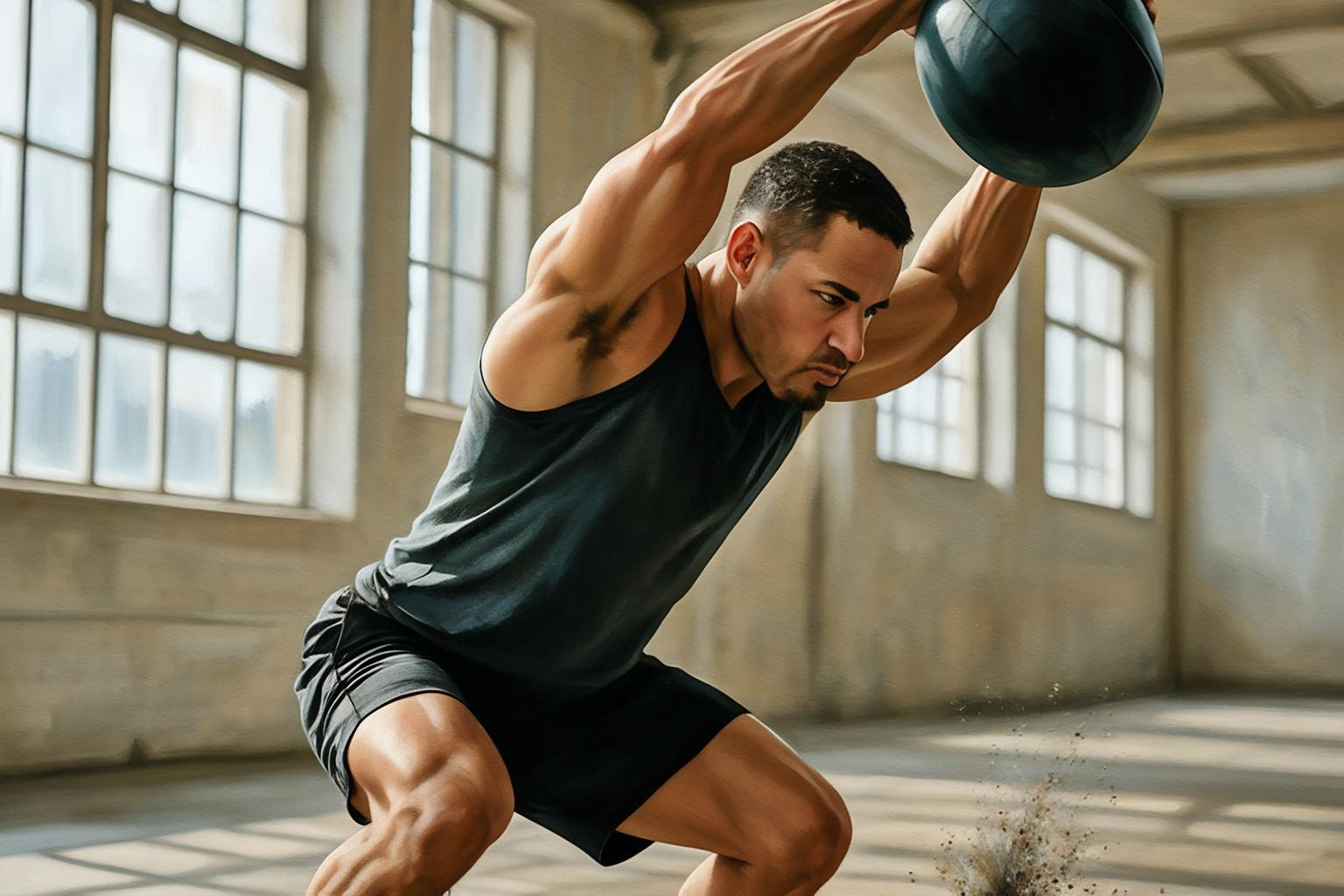Mastering Throwing Power and Precision: A Complete Guide
Throwing is not just about strength; it’s an art that requires a perfect blend of power, precision, and technique. Whether you’re an athlete striving to improve in track and field events, a baseball pitcher, or a football quarterback, building throwing power and precision is essential to success. In this guide, we will dive into the fundamentals of effective throwing mechanics, the exercises to enhance your power, and the training routines that develop accuracy and consistency. By the end of this article, you’ll have the knowledge to elevate your throwing performance, making each throw feel like a controlled explosion of force.
Understanding Throwing Mechanics: The Foundation of Power and Precision
To begin building throwing power and precision, it’s important to understand the mechanics behind a successful throw. Throwing is a coordinated motion that involves the entire body, not just the arm. Proper technique is the key to generating power without wasting energy. Whether you’re throwing a javelin, a football, or a baseball, the fundamental mechanics include:
The Windup: Every powerful throw starts with a solid windup. This is where the initial energy is stored in the body, allowing for a controlled release of power. A strong windup requires proper hip rotation, shoulder engagement, and a full stretch of the torso.
The Drive Phase: Once the windup is complete, the next phase involves driving the body forward. This is where much of the power comes from. The legs, core, and hips contribute significantly to the acceleration of the arm, transferring energy efficiently.
The Release: Finally, the release is where all the stored energy is unleashed. The throwing arm should extend fully, and the fingers should snap to give the projectile maximum speed and spin. Timing the release is crucial for achieving both power and precision.
The Role of Strength Training in Developing Throwing Power
Building throwing power begins in the gym. Strength training is the foundation for generating the explosive force needed for powerful throws. The primary goal is to strengthen the muscles responsible for driving the body forward and rotating the torso.
Core Strength: The core is the powerhouse behind most athletic movements, including throwing. A strong core stabilizes the torso during the throwing motion, ensuring that the energy generated from the lower body is transferred efficiently through the upper body. Incorporate exercises like planks, Russian twists, and medicine ball throws to build a solid foundation.
Lower Body Power: Explosive power originates from the legs. Strengthening the legs and hips allows for a strong push-off, contributing significantly to throwing velocity. Squats, lunges, and deadlifts are excellent exercises for building lower body power, while box jumps and sprints can help develop explosiveness.
Upper Body Strength: While the legs and core are important, the arms and shoulders play a crucial role in generating throwing power. Incorporate exercises that target the shoulders, chest, and arms, such as bench presses, overhead presses, and rows. Resistance bands can also be effective for developing throwing-specific shoulder strength.
Building Throwing Precision Through Technique and Practice
Precision in throwing is just as critical as power. A throw with power but lacking accuracy is of little use. To improve precision, you need to focus on technique, consistency, and fine motor control.
Focus on Follow Through: After the release, the follow-through is just as important. A proper follow-through ensures that the throw remains accurate and that the body maintains balance. For example, in baseball pitching, the follow-through helps ensure the ball doesn’t veer off-course.
Repetition with Intent: Precision comes with practice, but not just any practice. Repetition without purpose can create bad habits. Focus on each throw’s form, the arc, and target placement. Whether you’re practicing with a partner or a target, aim to make each throw deliberate and controlled.
Mental Visualization: Mental preparation is a critical component of precision. Visualization techniques can help you mentally rehearse a throw and picture its path before you execute it. This mental process helps refine your technique, allowing you to execute throws with greater consistency.
Explosive Drills to Boost Throwing Power
To build throwing power, you must engage in explosive drills that train your body to generate speed and strength. These drills focus on quick, forceful movements that mimic the motions of a throw.
Medicine Ball Slams: This exercise is excellent for developing explosive power in the arms and core. By throwing a medicine ball to the ground with force, you mimic the violent release phase of a throw while also working on upper body strength.
Rotational Throws: Using a medicine ball or weight, perform rotational throws to simulate the torso twist during a throw. This helps strengthen the core while improving the coordination between your upper and lower body.
Sprints and Plyometrics: Explosive movements like sprints, bounding, and box jumps help develop the lower body’s power and explosiveness. Sprinting strengthens the legs and hips, while plyometrics help train the fast-twitch muscle fibers, which are crucial for generating speed and force in throws.
The Role of Flexibility and Mobility in Throwing Precision
Throwing involves a range of motion in the shoulders, hips, and lower back. If these areas lack mobility, they can limit the effectiveness of your throws, making it harder to achieve precision. Stretching and mobility exercises should therefore be part of your regular routine.
Dynamic Warm-ups: Before any throwing session, ensure you warm up with dynamic movements that engage the muscles and joints involved in throwing. Arm circles, shoulder rotations, and leg swings prepare the body for the full range of motion.
Stretching: After your workout, incorporate stretching to improve flexibility in your shoulders, hips, and lower back. Exercises like the hip flexor stretch, shoulder stretches, and spinal twists help maintain and increase mobility, allowing for a smoother throwing motion.
Foam Rolling: Regular foam rolling helps release muscle tightness and improve mobility. Pay special attention to areas like the calves, hamstrings, and shoulders, as tight muscles here can hinder your throwing form and precision.
Nutrition and Recovery: Fueling Performance and Preventing Injury
Building power and precision requires proper recovery and fueling. Your body needs the right nutrients to repair muscle tissue and replenish energy stores after intense training sessions.
Protein for Muscle Growth: Adequate protein intake is essential for muscle recovery and growth. Lean meats, eggs, legumes, and plant-based proteins like quinoa help repair muscles and build strength.
Carbohydrates for Energy: Throwing requires explosive bursts of energy, so carbohydrates are essential for replenishing glycogen stores. Complex carbs like brown rice, sweet potatoes, and whole grains provide sustained energy for training.
Hydration: Staying hydrated is key to maintaining performance. Dehydration can lead to muscle cramps, fatigue, and a lack of coordination. Drink water regularly and consider electrolyte replenishment if you’re training intensely.
Rest and Recovery: Your muscles grow and repair during rest, not during the workout itself. Make sure to get adequate sleep and include rest days in your training program. Active recovery, such as light swimming or yoga, can also help improve flexibility and reduce muscle soreness.
Fine-Tuning Your Throwing Routine for Maximum Results
To truly master throwing power and precision, consistency is key. Building a comprehensive routine that incorporates strength training, explosive drills, flexibility exercises, and recovery will provide the best results. A sample weekly routine might include:
Day 1: Strength training (lower body focus)
Day 2: Explosive drills (medicine ball slams, rotational throws)
Day 3: Rest or active recovery (stretching, foam rolling)
Day 4: Strength training (upper body focus)
Day 5: Precision throwing drills (target throws, mental visualization)
Day 6: Plyometric exercises (box jumps, sprints)
Day 7: Rest
Adjust the routine based on your specific goals, whether you are training for sports or general throwing improvement. Consistency and gradual progression will lead to the best results.
Taking Your Throwing to the Next Level: Key Takeaways
Building throwing power and precision is a multifaceted process that requires a balance of strength, technique, and mental focus. To master the art of throwing, you must commit to consistent practice, proper training, and optimal recovery. Whether you are a competitive athlete or simply looking to improve your throwing abilities, applying these principles will make every throw feel like a calculated move with explosive force and pinpoint accuracy.
Strengthen Your Core: Focus on core exercises to improve stability and transfer power efficiently.
Enhance Mobility: Prioritize flexibility and dynamic warm-ups to improve range of motion and reduce the risk of injury.
Develop Explosive Power: Engage in explosive drills that mimic throwing mechanics to increase throwing velocity.
Perfect Your Technique: Consistently refine your throwing form to improve both power and accuracy.
Fuel and Recover: Maintain a proper diet, stay hydrated, and allow time for recovery to maximize performance.
Building throwing power and precision is not an overnight process, but with dedication and the right approach, you’ll see significant improvement in your throwing capabilities. Keep pushing your limits, and watch your throws become more powerful and accurate with every session.




